As several Asian nations gear up to celebrate the lunar new year, families are preparing to partake in the unique traditions associated with the festival and welcome the year of the snake.
The lunar new year marks the first new moon of the lunar calendar, which this year rises on 29 January, kicking off festivities that last 15 days until the first full moon.
While the duration of the festival and the ceremonies associated with it vary by country, the main idea is to usher in the new year with loved ones.
Asian nations have bolstered their transport facilities to keep up with the surge in travel demand. Flights to Japan from Hong Kong will be leaving every 15 minutes, with the acting CEO of the city’s airport authority saying there were 150 flights scheduled to and from 13 Japanese cities in the holiday period.
The Chinese government expects nine billion trips – nearly 510 million by train, 90 million by air, and the rest by car – to be undertaken during the festive period, the Associated Press reported.
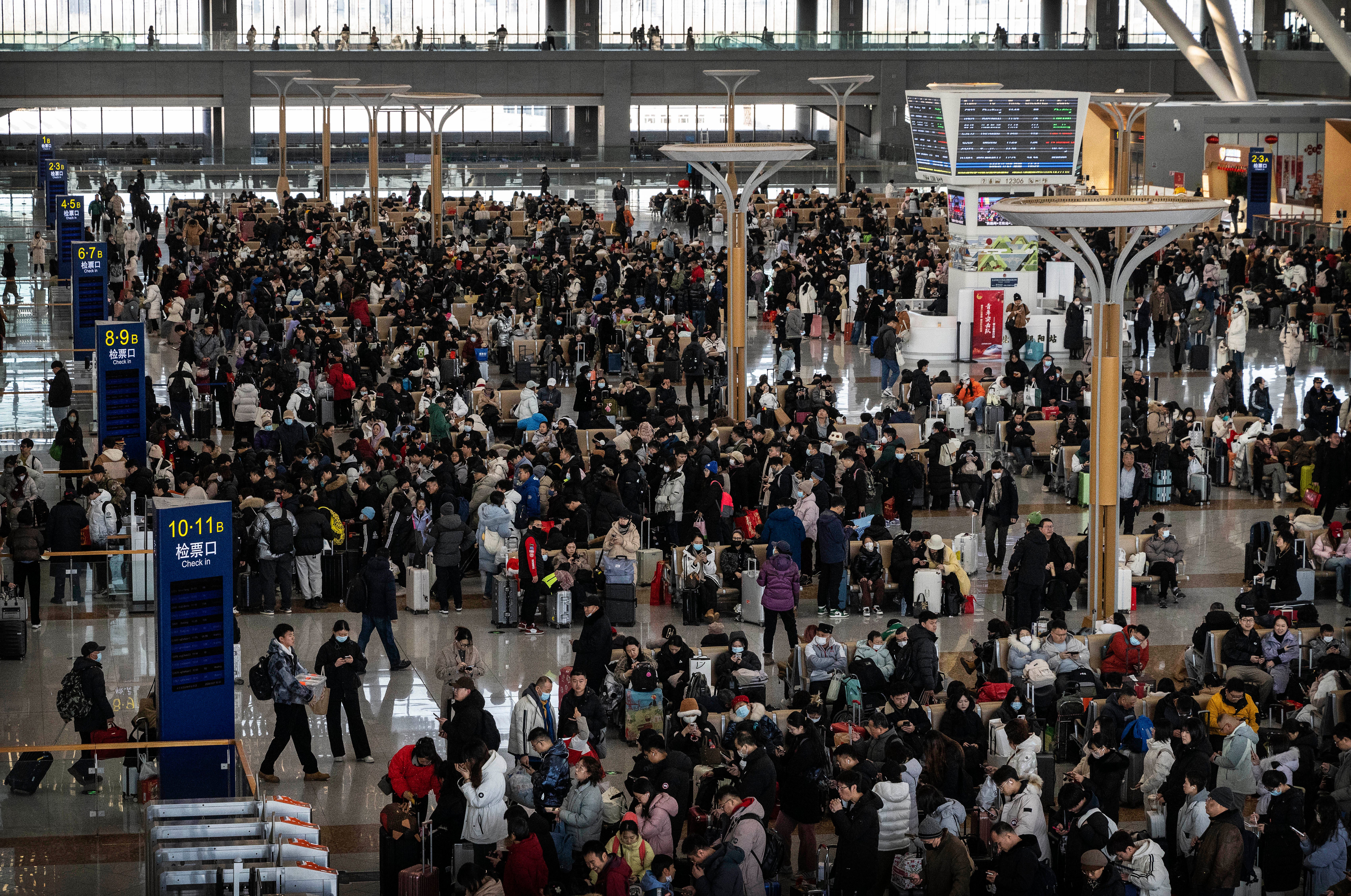
According to local media, South Korea expects to see 6.39 million cars on the highways, despite Tuesday’s heavy snowfall throwing a wrench into some travel plans.
In China, most businesses and government offices close for an official eight-day public holiday to allow people to travel back home for reunions, while South Koreans get a six-day break after the government designated 27 January as a temporary holiday.
While it has origins in China and Chinese communities in other places, the festival is celebrated in many countries and is even known by different names – the Chinese call it Spring Festival, the Vietnamese call it Tet, South Koreans Seollal, and Indonesians Imlek.
Why is it the year of the snake?
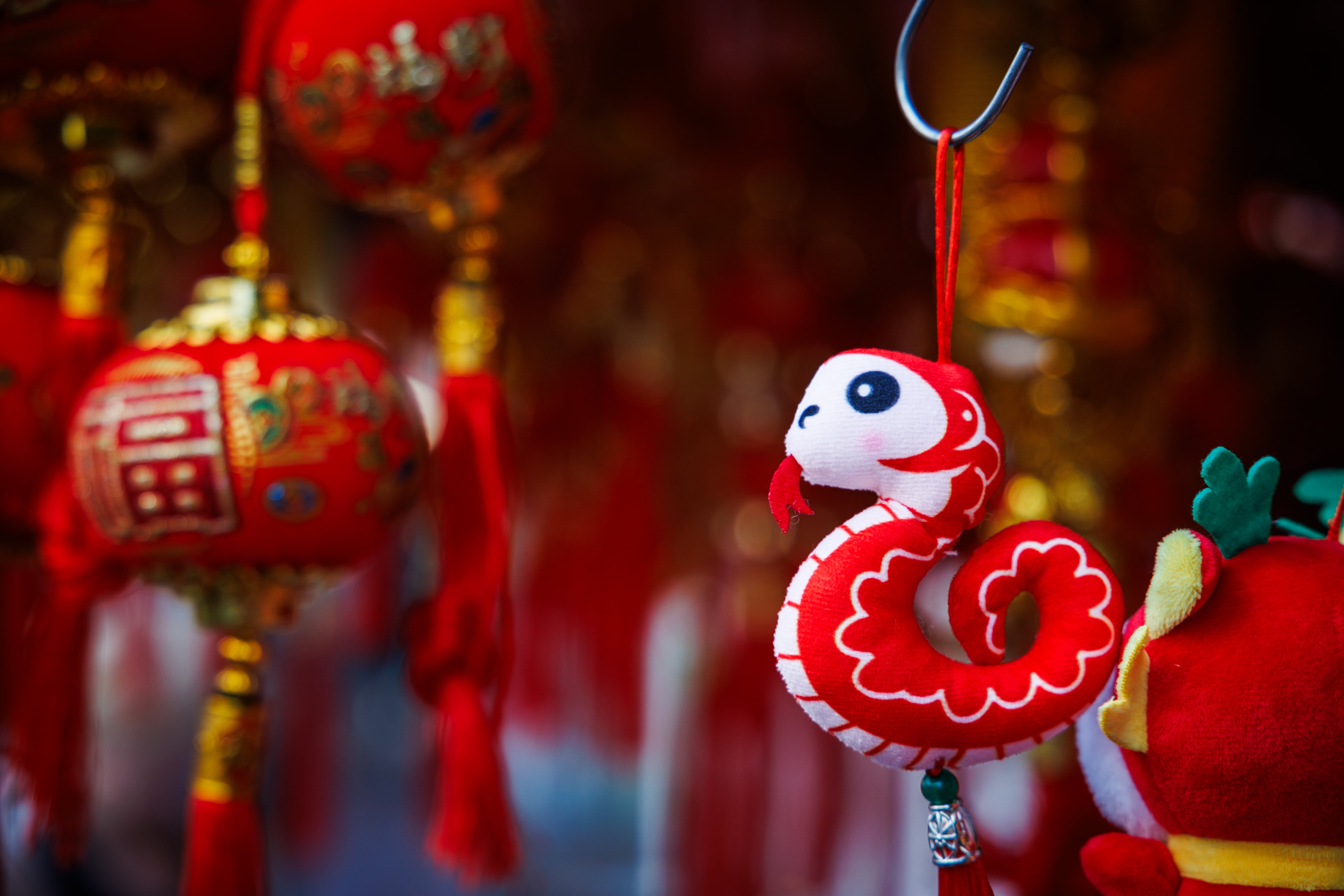
The Chinese zodiac calendar is a continuous 12-year cycle, each year represented by 12 animals in a specific order – Rat, Ox, Tiger, Rabbit, Dragon, Snake, Horse, Goat, Monkey, Rooster, Dog, and Pig.
A person’s zodiac is determined by the year and the animal they are born under, and it’s believed to influence their personality, career, relationships, and fortunes.
According to this cycle, 2025 is the year of the snake and children born through this year will be snakes.
How do different countries celebrate?
Planning and preparing for the festivities begins at least a week before the new year arrives, with houses hanging red banners carrying auspicious phrases and lanterns. These banners are meant to invite good fortune and keep away an underwater beast named Nian.
Fireworks are an integral part of the new year celebrations, as the vibrant display is meant to drive away any bad luck that may be lurking.
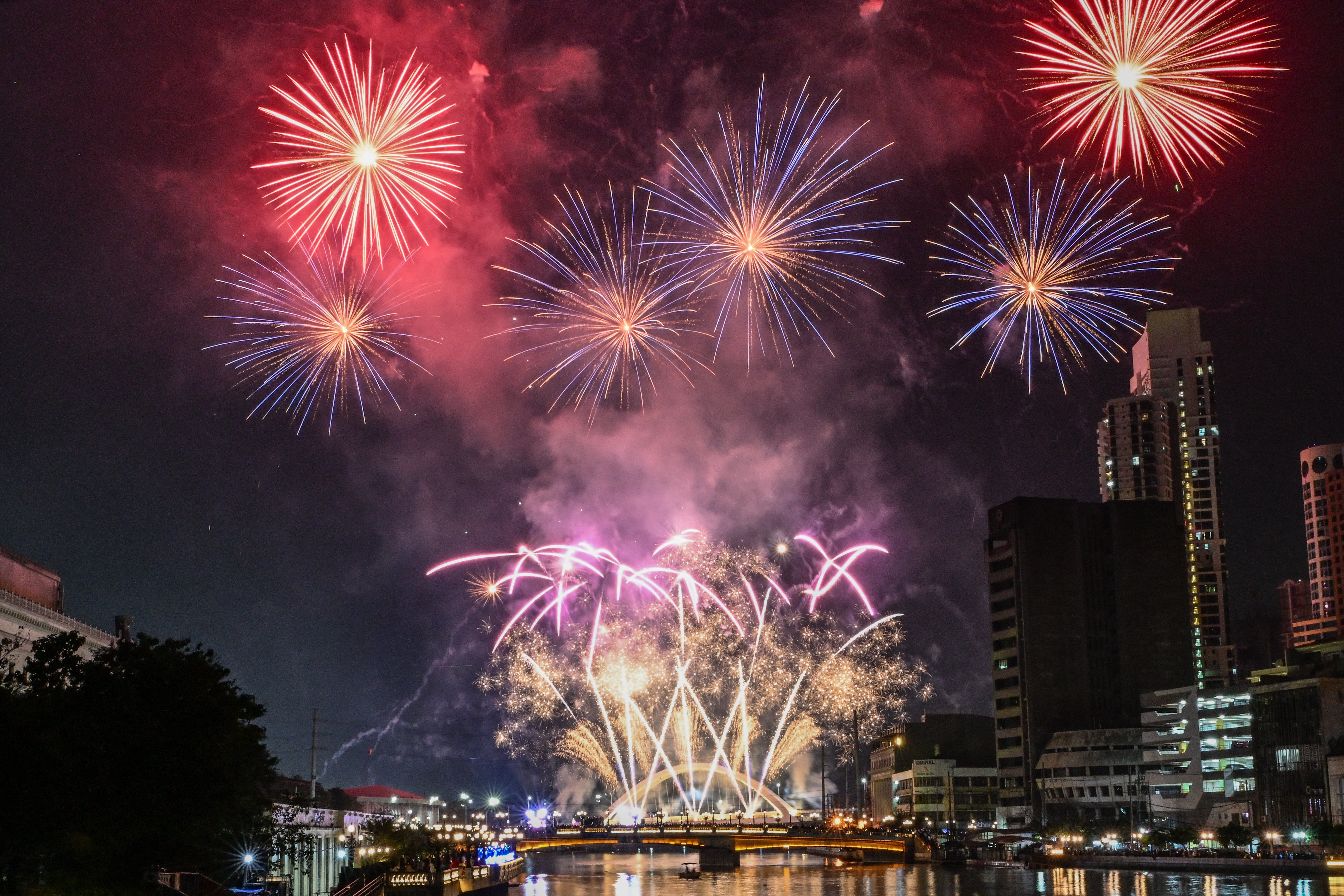
Hong Kong expects to see close to 400,000 people at the Victoria Harbour for a 23-minute fireworks show on Thursday, the South China Morning Post reported.
Families also start spring cleaning, with the assumption being that it empties the house of any bad luck. Many even believe that cleaning the house or taking the trash out in the first few days of the new year will sweep away all the good luck they have just managed to gain.
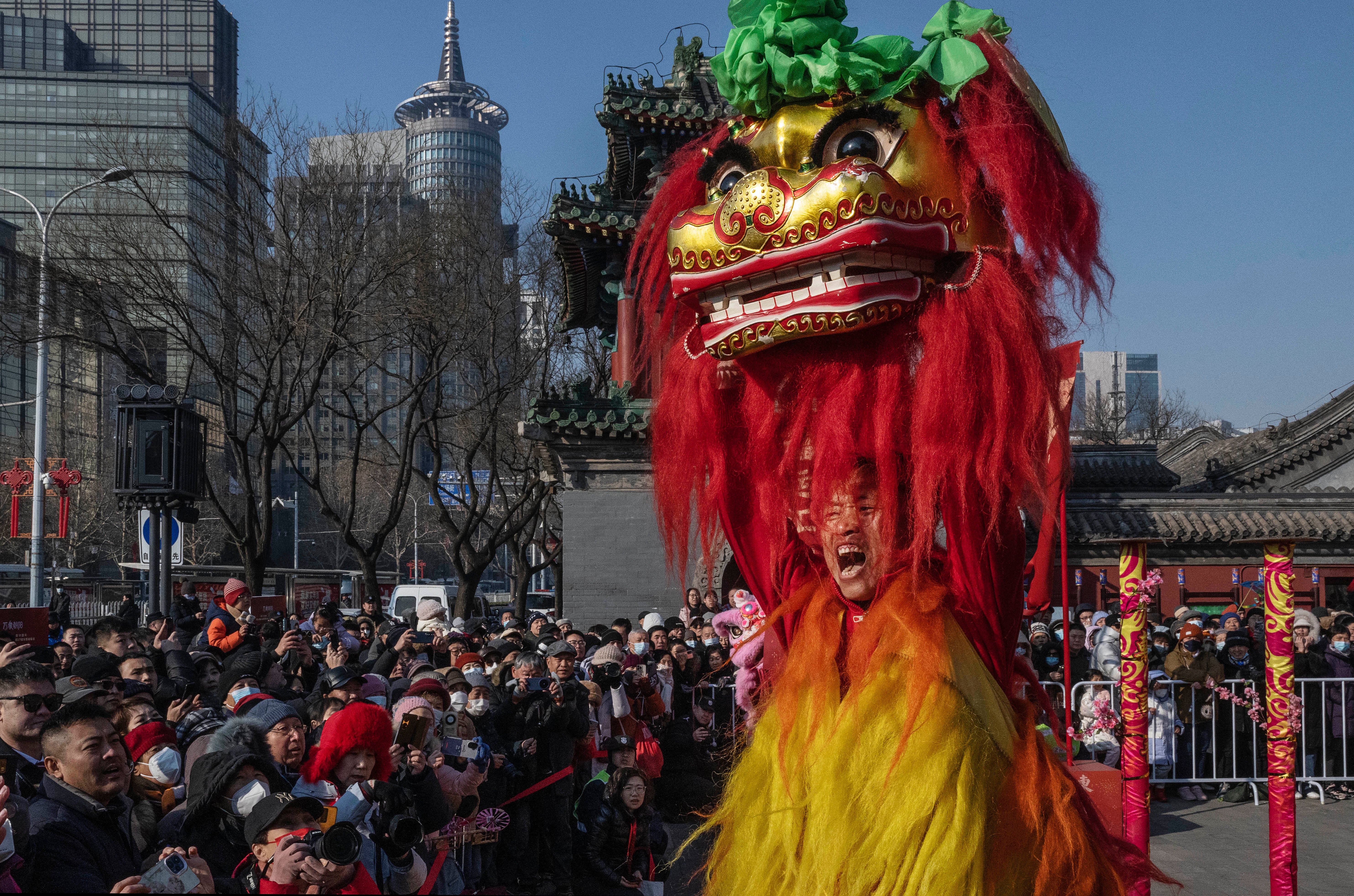
People often travel back to their hometowns during this period and spend the first few days of the new year meeting relatives and loved ones, with bags full of fruit and presents.
Married people are expected to distribute red envelopes with money to unmarried people, supposedly to keep away evil spirits.
In South Korea, a ritual called sebae is observed where people dress in traditional clothing called hanbok to offer deep bows to elders and ancestors to wish them a happy new year. In return, they are given pocket money, rice cakes, and fruit.
Traditional lion dances are often seen in lunar new year parades. They are considered lucky and believed to ward off evil spirits from homes and workplaces.
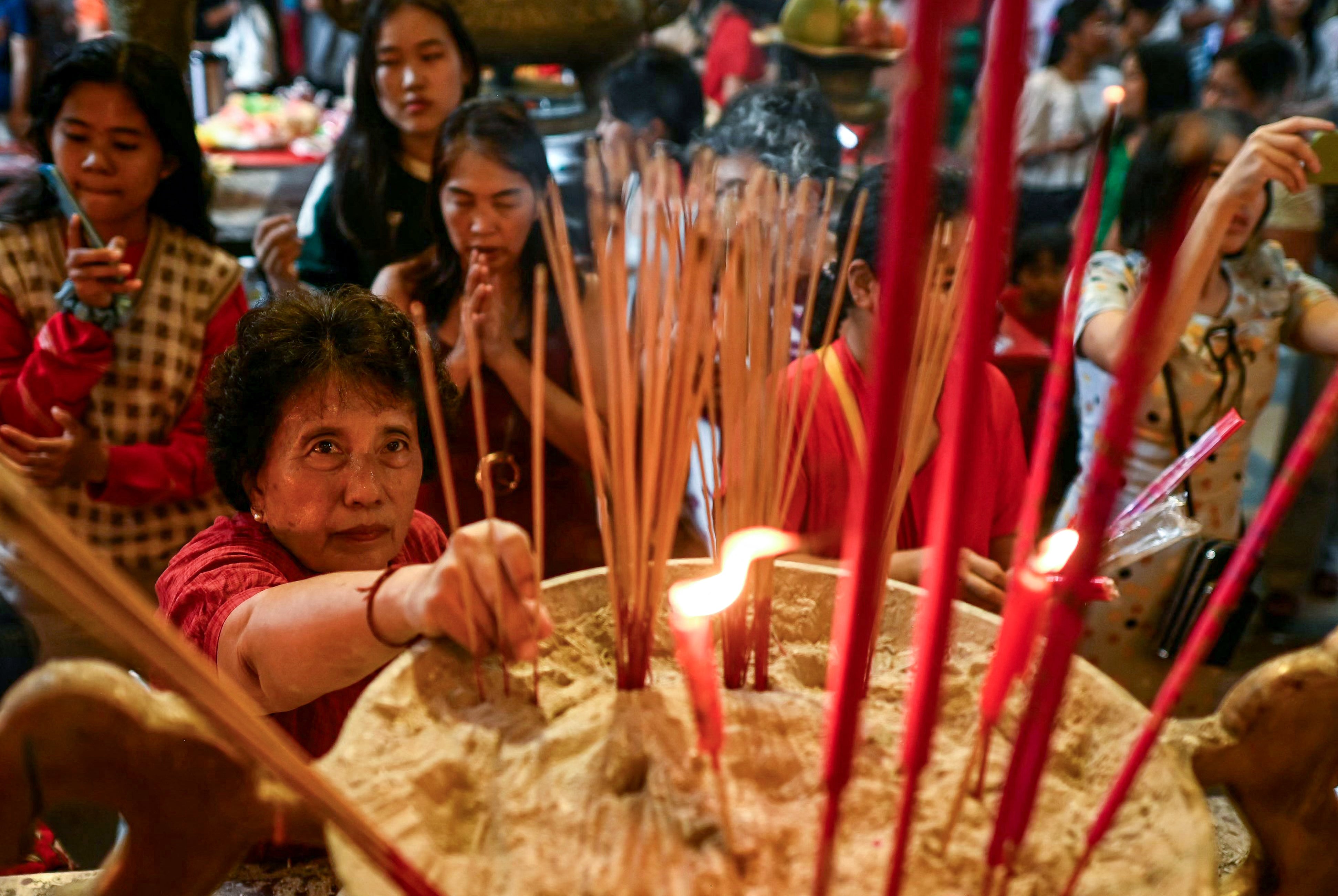
Many head to temples to pay their respects and make offerings to even out any potential bad luck.
One of the most important parts of the festival is the reunion dinner, where the entire family gathers for a feast, with each dish carefully selected for its symbolism.
Malaysians and Singaporeans make a salad called yee sang, which can’t be eaten without a “prosperity toss”, where everyone gathered stirs together the shredded ingredients and then tosses them high in the air to symbolise good luck.
Vietnamese families come together to make a sticky rice cake known as banh chung, which takes close to 12 laborious hours. The idea is to share the joy of good food with each other.
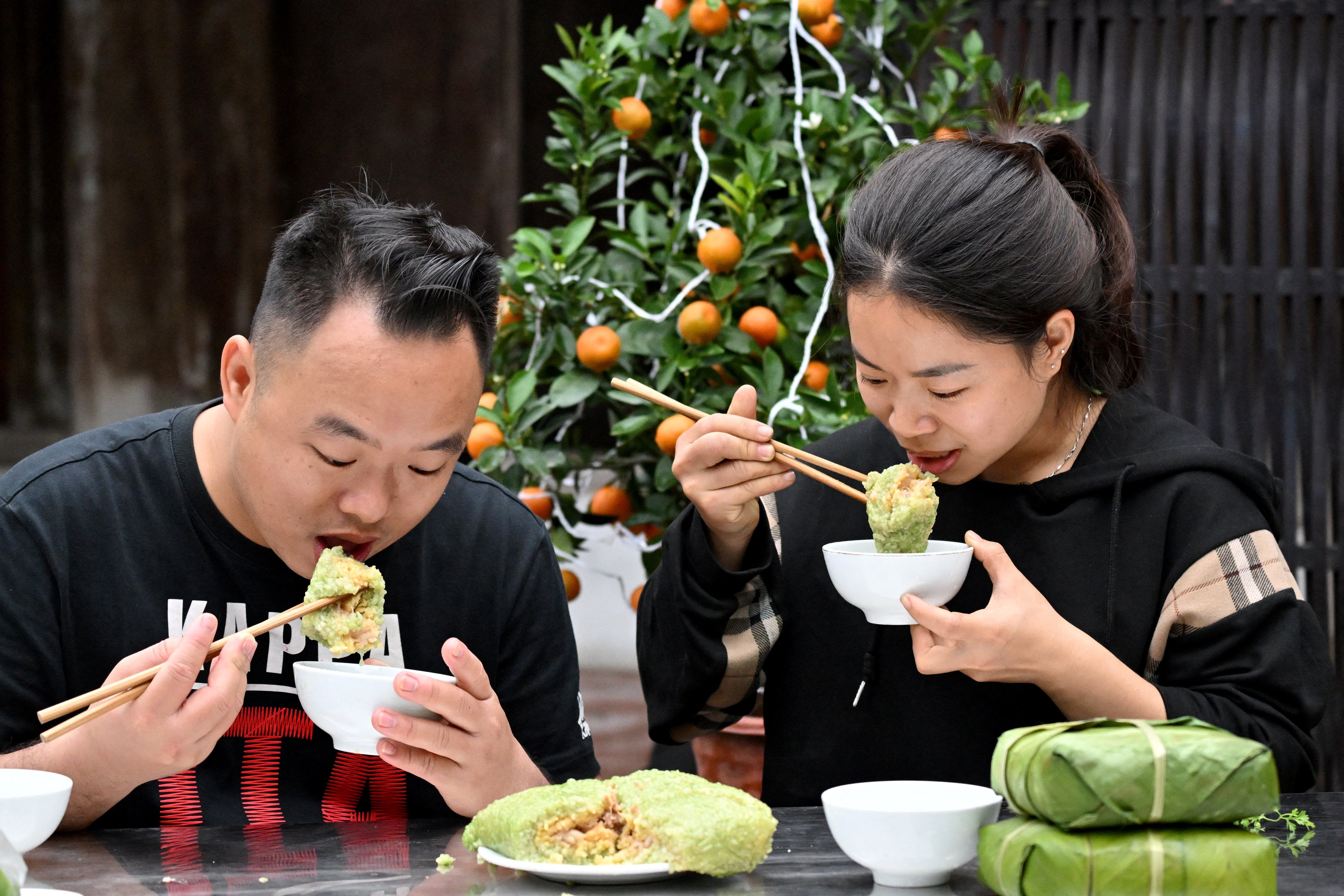
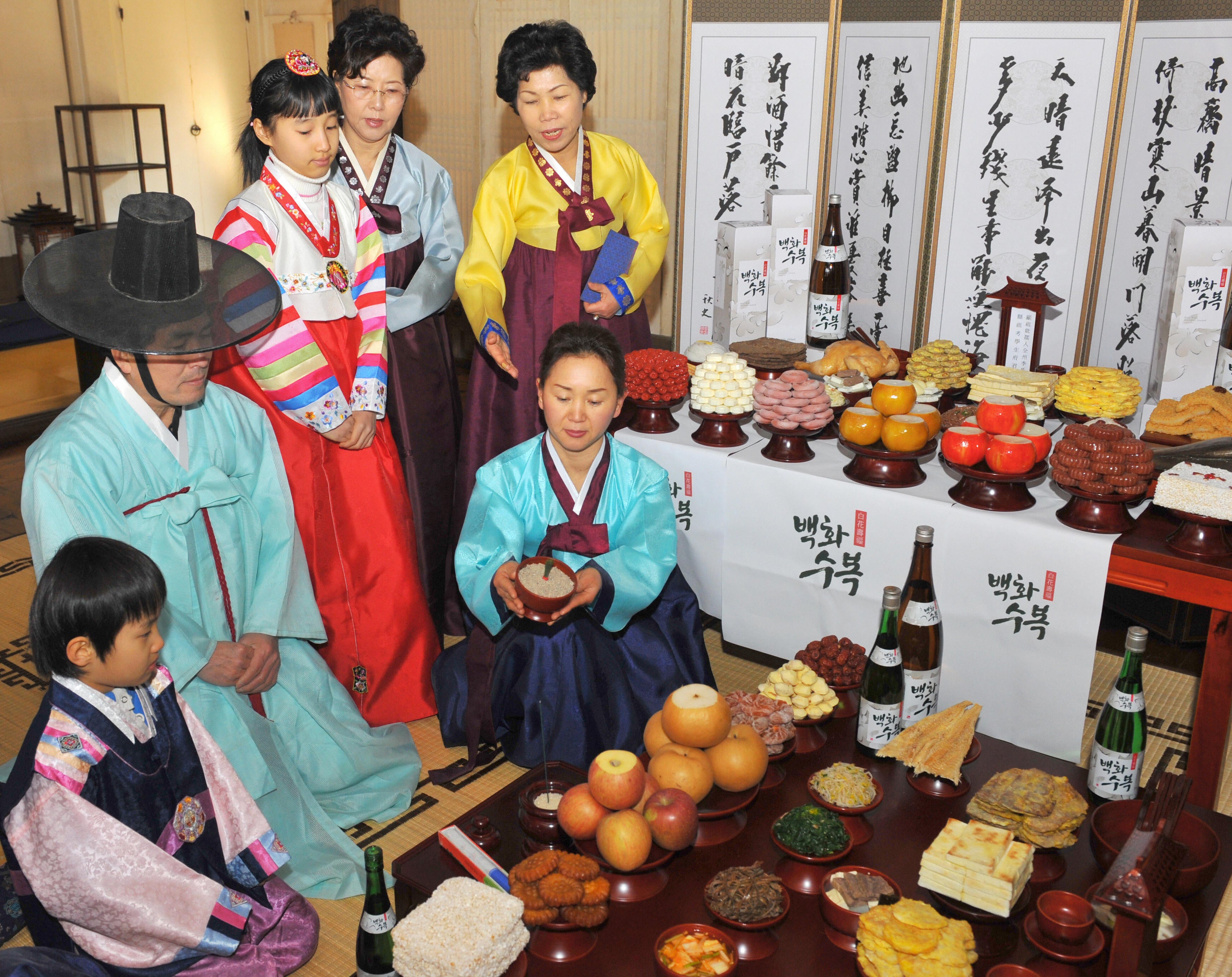
In Korea, a rice cake soup named tteokguk is consumed, which represents rebirth, new beginnings, and the passing of time. A sweet rice cake shaped like a half-moon, called songpyeon, is eaten for good luck as its shape is meant to signify abundance and prosperity.